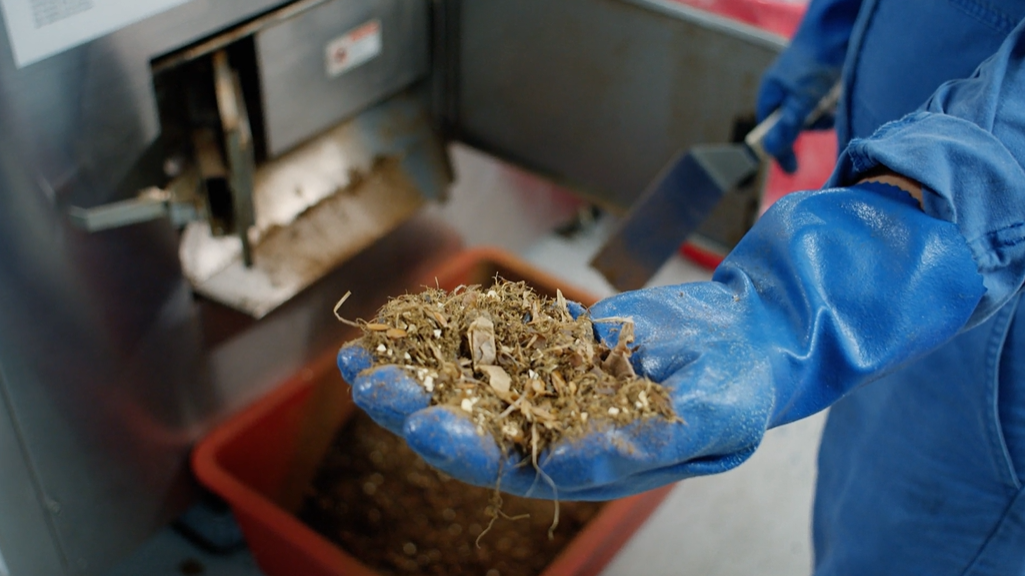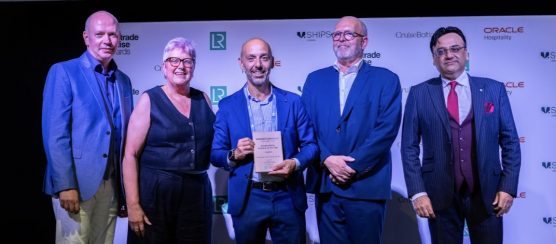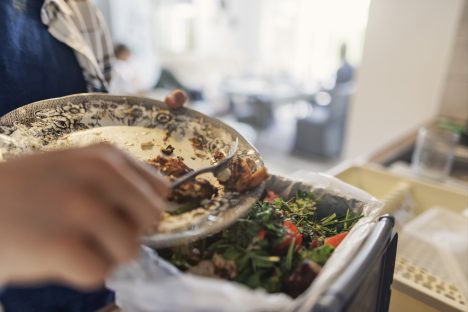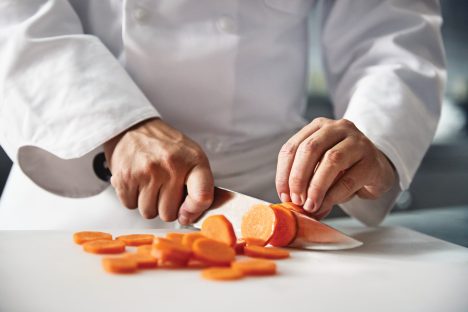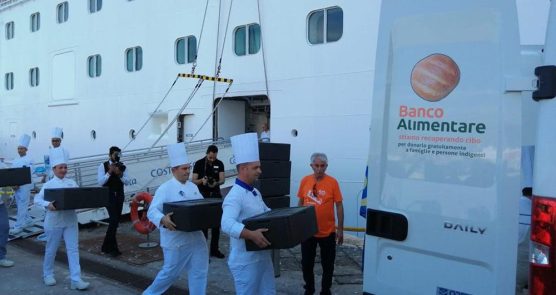Less Left Over, More Impact: Carnival Corporation’s Recipe for Food Waste Reduction
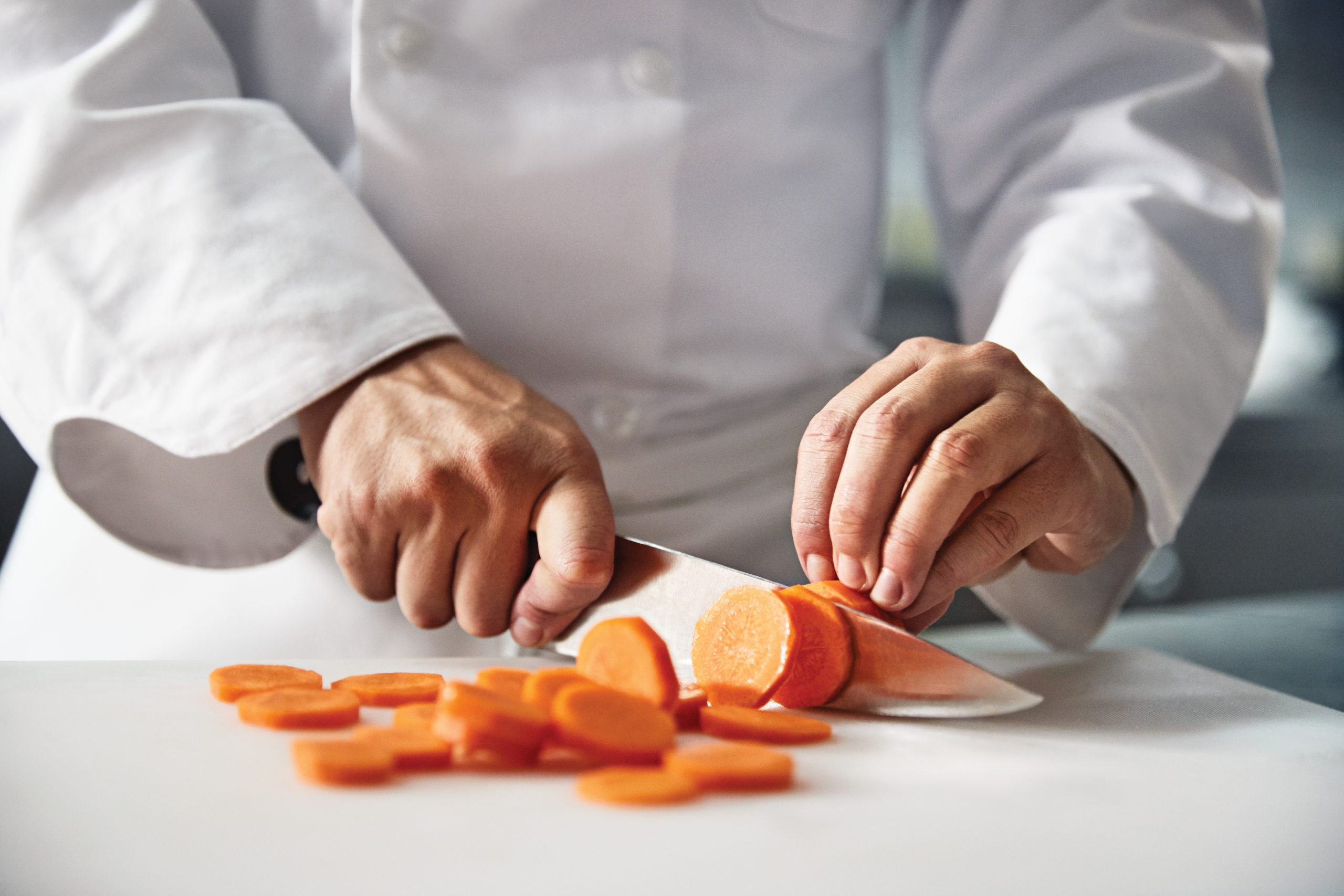
Company’s Less Left Over strategy covers dozens of different initiatives – large and small – taking place across its cruise lines worldwide to help cut food waste by 50% by 2030
As dawn breaks over the bustling galleys of Carnival Corporation’s cruise ships, culinary teams meticulously prepare thousands of meals that will delight guests throughout the day. Behind this impressive operation lies an equally impressive commitment: finding smart ways across its world-class cruise lines to ensure food and ingredients don’t go to waste.
Operating the world’s largest cruise company with a global fleet of 90+ ships visiting over 800 ports and destinations presents unique opportunities to integrate sustainable practices throughout every phase of the food lifecycle. In delivering exceptional dining experiences to almost 13.5 million guests annually, Carnival Corporation has developed our comprehensive “Less Left Over” food waste reduction strategy, which spans from onboard operations to port communities worldwide.
“Even small improvements can have enormous positive impacts when you’re serving millions of meals each year,” says John Haeflinger, SVP, Maritime Policy & Analysis at Carnival Corporation. “We’re constantly analyzing our approach to optimize sourcing and production, and creating new pathways to responsibly manage the rest so there is less left over. We’ve already cut our food waste by nearly one pound per person per day, and we’re always looking for ways to do more.”
Through our Less Left Over strategy, we have reduced food waste per person by nearly half since 2019, surpassing our 2025 reduction target a full year ahead of schedule and tracking toward our ambitious 50% reduction goal by 2030. The strategy is also helping our company’s bottom line, avoiding over $250 million in food purchases to date (vs. 2019 levels) that would have gone uneaten. This achievement rests on optimizing every bite, donating surplus meals to feed others and responsibly managing any scraps that remain.
Optimizing Every Delicious Bite Onboard
Well before any food makes it to the galley, advanced data-driven technology helps our culinary teams analyze guest and crew dining trends to fine-tune how much food is purchased for each sailing. It also provides insights for optimizing food utilization based on serving flows, avoiding excess food from the start.
Once fresh produce arrives in the galley, culinary teams work diligently to use as much of every ingredient as possible with precise preparation guides that limit scraps as part of the Less Left Over approach. They leverage creative ways to get the most out of each ingredient, like transforming orange peels into citrus muffins or turning unused bread into croutons.
These efforts all come together on the plate, where guests and crew enjoy perfected, tasty recipes served in “just right” portions that allow those with hearty appetites to enjoy second helpings while having less left over from light eaters and grazers.
Creating the Blueprint for Donating Surplus Meals to Registered Food Banks
While our corporate-wide goal is to have less uneaten food in the first place, we work hard to keep any unused food from going to waste. It’s in this context that our Costa Cruises line had a vision to collaborate with food banks in the ports where it operates to find a new life for the high-quality extra food and meals prepared aboard but not served on its ships.
Food banks are non-profit organizations dedicated to alleviating hunger, marginalization and poverty, and promoting the fight against food waste by coordinating and organizing the recovery of food surpluses through Banco Alimentare Organisations, which then distribute the food free of charge to Territorial Partner Organisations that support people and families in need.
Costa knew it was possible, but that the unprecedented program would require new procedures never before established for preparing surplus meals for offloading. So, the Costa team began working with authorities to align extensive maritime and shoreside food and beverage health safety regulations to – for the first time – enable donations ashore.
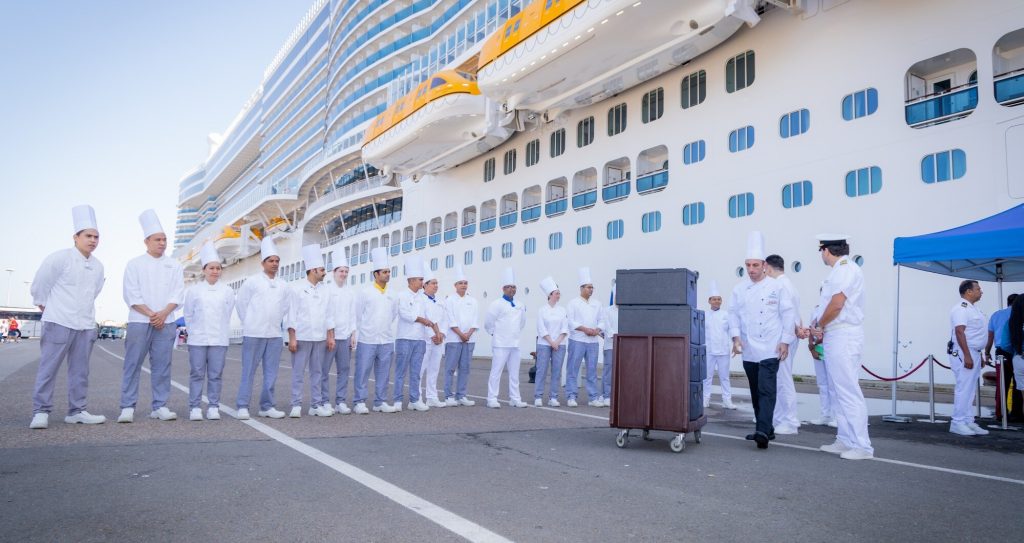
The hard work paid off, and Costa Cruises became the first cruise line in the world to lock in the regulatory framework to make donating delicious, gourmet ready-to-eat meals to community food banks a reality. These collaborative efforts have been repeated time and again to establish the proper regulatory framework in several countries that now allow our Costa Cruises line to donate surplus food that would have previously been impossible due to unnecessary regulatory barriers. 16 total ports were included in the project since the beginning of the program, with more than 300,000 of food portions donated throughout the Mediterranean and the Caribbean.
“Many of the communities we visit have a local Food Bank doing incredible work to address food insecurity,” explains Luca Zuccolo, Hotel Asset and Sustainability Director. “We’re grateful to partner with these organizations by contributing surplus ingredients and prepared meals that would otherwise go unused, helping support their efforts while ensuring less food goes to waste.”
Today, across Carnival Corporation, we’re working to replicate the model globally, using our food-donation blueprint to further broaden the social impact and help create pathways for responsible food donation that didn’t exist before.
Sustainably Managing the Scraps that Remain
When surplus meals cannot be rescued for use in addressing food scarcity, we still find ways to ensure there is less left over by investing in innovative waste management technologies and systems that responsibly manage and treat unused food scraps.
We have installed hundreds of food waste biodigesters fleetwide that naturally break down and liquefy food waste to a tiny fraction of its original volume. Additionally, dehydrators and dryers process items that are difficult to decompose, while bio-grinder technologies further minimize waste volume so it can be biodigested, released to nature or offloaded ashore.
Our Carnival Corporation Less Left Over strategy is a key ingredient in a larger plan to cut down on waste and embrace a circular economy mindset, both onboard and in our land operations. Our holistic approach demonstrates how the travel and tourism industry can be part of the solution – one meal, one community and one port at a time.
To learn more about Carnival Corporation’s purpose and our positive impact worldwide on people and the planet, go to www.carnivalcorp.com/impact/.
